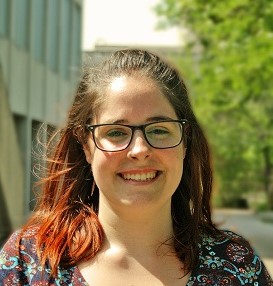
Research at the Canadian Light Source
Carmen Marquez Mellidez transferred from the Universidad Complutense de Madrid with the Trans-Atlantic Science Student Exchange Program (TASSEP). Because of exciting research opportunities here, she extended her stay.
Words of wisdom for undergraduate students interested in doing research:
- Be persistent. “I talked to four different professors before [one] said yes to me!”
- Open your mind. “Even though you might have one topic in mind, you might find something else that you are interested in. Don’t close yourself off to only one field.”
- Dedicate the time. “Make contacts! Volunteer! It might not seem like it is worth it at the time, but volunteering in a lab can be worth it in the future. [And you need those contacts] when you are looking for samples or a supervisor.”
- Keep a positive attitude. “It took me nearly a year to get this one sample studied, but that is not wasted time. It was time spent studying, preparing, and getting excited!”
- It is your research. “I was not following my supervisor blindly, I was presenting my ideas. Yes you need a supervisor to supervise you, but be the master of your own research.”
Carmen Marquez Mellidez transferred to the University of Saskatchewan in September 2014 from the Universidad Complutense de Madrid with the Trans-Atlantic Science Student Exchange Program (TASSEP). She initially came for eight months, but because of exciting research opportunities here, she extended her stay.
One of these exciting opportunities is at the Canadian Light Source (CLS), where Marquez Mellidez is using the VESPERS beamline to study mummified bone tissue and contribute to our understanding of the role of trace elements in cancer. This line of inquiry is influenced by her interests in forensics and microbiology which stemmed from watching CSI as a kid and from life experience. An advantage of her current research project is that she gets to combine both of these interests.
Getting Involved
As part of her degree requirements, Marquez Mellidez needs to conduct a research project under faculty supervision. She met her supervisor when she was in Dr. Treena Swanston’s Paleopathology class. “I just introduced myself, said that I was interested in the class material, and asked to do a project with her.”
Initially Marquez Mellidez volunteered and did some training at the CLS in July 2015 at the recommendation of Dr. Swanston. The extra time and dedication assured Dr. Swanston that she was ready to begin the project. However, this volunteering had other advantages as well – Marquez Mellidez met people studying in her area and garnered networks and contacts which proved useful later on when she was searching for a bone sample.
Beyond the Books

When asked about her most memorable moment, Marquez Mellidez referred to the first time she used the beamline to study a sample: “I kept thinking to myself, ‘How am I in this huge thing, to scan one little bone?’ and ‘If I break this machine, I am so dead’”. Scanning took 18 hours, and she laughed recalling how she fell asleep exhausted but anxious on a couch while awaiting the results. When she saw evidence of the trace elements she had been anticipating in a tiny crevice of the small rib she studied, she felt ecstatic. She proudly held up an image of her results and exclaimed that it – the hours volunteering, the time spent over the last year contacting people in search of a bone sample, the 18 hours spent scanning the bone at the CLS – had all been worth it!
Marquez Mellidez is passionate about her research, and encourages other students to pursue their research interests while at the undergraduate level. “I think it is definitely something that everybody should have to do. It is really good to have your first contact with research in your field [while you are an undergraduate student].” “School is much more than putting yourself in front of a book."

Carmen Marquez Mellidez has a BSc Honours in Biology from the Universidad Complutense de Madrid, Spain, and is currently in her third year of a Microbiology and Immunology degree at the University of Saskatchewan.
Written by Miranda Gartner
Photos courtesy of Dr. Swanston and Carmen Marquez Mellidez

